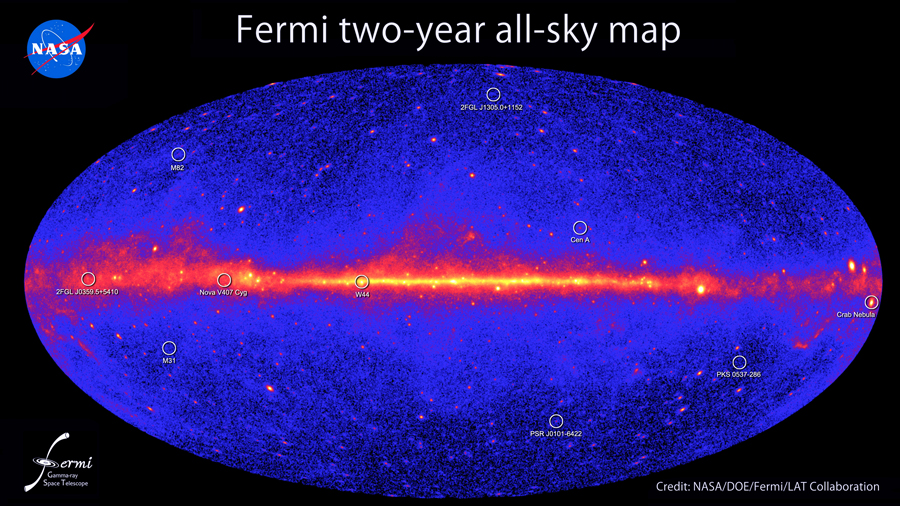NASA Spacecraft Lifts Veil on Universe's Brightest Explosions

VANCOUVER, British Columbia — Astronomers are closer than ever to understanding the brightest explosions in the sky thanks to a NASA space telescope that sees the most energetic kind of light.
These bright flashes are gamma-ray bursts, and they occur when a big star dies and collapses in on itself to become an incredibly dense, incredibly small ball of matter called a black hole. As the star falls in, it expels its outer layer in a supernova, resulting in a bright release of light outward in all directions.
But sometimes an even brighter flash of light comes when the black hole, which is rotating very fast, sucks in matter and releases a thin jet of high-energy, high-speed radiation.
"The black hole is rotating rapidly and as it is swallowing the matter from the star, the rotation ejects a jet of material through the supernova envelope," Pennsylvania State University astronomer Péter Mészáros said today (Feb. 18) here at the annual meeting of the American Association for the Advancement of Science. [Photos: Black Holes of the Universe]
This gamma-ray burst temporarily becomes the most luminous thing in the universe.
To spot these brief spectacles, astronomers are taking advantage of the Fermi Gamma-Ray Space Telescope, which was launched in 2008 on a mission to observe gamma rays, the highest-energy form of light.
"Fermi is lucky to measure the highest energy portion of the gamma-ray burst emission, which last for hundreds to thousands of seconds — maybe 20 minutes," Mészáros said in a statement.
Get the Space.com Newsletter
Breaking space news, the latest updates on rocket launches, skywatching events and more!
And these jets of radiation move extremely fast, basically at the speed of light, which is generally thought to represent the ultimate cosmic speed limit. However, researchers would like to know the jets' speeds more precisely to further refine theory theories.
"Fermi has done much better in measuring how close to the speed of light the jet gets," Mészáros said. "But we still don't know if it is 99.9995 percent the speed of light or 99.99995 percent the speed of light."
Though astronomers have a general handle on what causes a gamma-ray burst, many aspects of the process are shrouded in mystery. One particularly thorny aspect comes from the fact that the explosions, and the black holes at the heart of them, involve extremely large masses and very tiny spaces.
Scientists use two theories to understand these realms. Einstein's general theory of relativity covers things that are very large, such as huge masses. And the theory of quantum mechanics reigns over things that are very small, such as tiny dimensions. However, these two theories are incompatible with each other, and scientists don't know how to reconcile them.
"We have been able to rule out the simplest version of theories which combine quantum mechanics with gravity, although others remain to be tested," Mészáros said.
The researchers hope that with more observational data from Fermi and other instruments, they will be better able to refine the theories that describe gamma-ray bursts and other extreme occurrences in the universe.
You can follow SPACE.com assistant managing editor Clara Moskowitz on Twitter @ClaraMoskowitz. Follow SPACE.com for the latest in space science and exploration news on Twitter @Spacedotcom and on Facebook.
Join our Space Forums to keep talking space on the latest missions, night sky and more! And if you have a news tip, correction or comment, let us know at: community@space.com.

Clara Moskowitz is a science and space writer who joined the Space.com team in 2008 and served as Assistant Managing Editor from 2011 to 2013. Clara has a bachelor's degree in astronomy and physics from Wesleyan University, and a graduate certificate in science writing from the University of California, Santa Cruz. She covers everything from astronomy to human spaceflight and once aced a NASTAR suborbital spaceflight training program for space missions. Clara is currently Associate Editor of Scientific American. To see her latest project is, follow Clara on Twitter.








